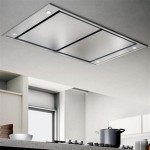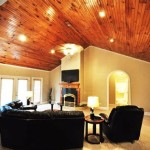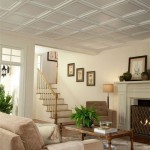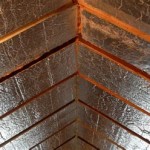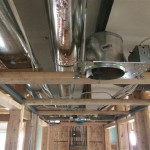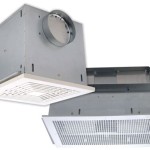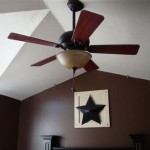What Kind of Paint Should You Use On a Bathroom Ceiling?
Selecting the appropriate paint for a bathroom ceiling is crucial for ensuring both aesthetic appeal and long-term durability. Bathrooms are environments characterized by high humidity and fluctuating temperatures, factors that can significantly impact the performance and lifespan of paint. Using the wrong type of paint can lead to issues such as peeling, blistering, mold growth, and discoloration, requiring frequent and costly repainting. This article provides a comprehensive overview of the key considerations when choosing paint for a bathroom ceiling, exploring the different types of paint available and their suitability for this specific application.
The primary challenge in a bathroom is managing moisture. Hot showers and baths generate significant amounts of steam, which condense on surfaces, including the ceiling. This continuous cycle of condensation and evaporation creates an ideal environment for mold and mildew to flourish. Furthermore, the constant exposure to moisture can weaken the paint film, causing it to lose adhesion and eventually fail. Therefore, the paint selected must possess exceptional moisture resistance and be formulated to inhibit the growth of mold and mildew.
Beyond moisture resistance, other factors to consider include the paint's finish, its ease of application, and its overall durability. The finish affects the ceiling's appearance and its ability to withstand cleaning. Ease of application impacts the time and effort required for the painting project, while durability ensures that the paint maintains its integrity over time, reducing the need for frequent repainting. Careful consideration of these factors will ensure that the chosen paint not only looks good but also provides long-lasting protection for the bathroom ceiling.
Understanding the Importance of Moisture Resistance
The most critical characteristic of paint intended for bathroom ceilings is its ability to resist moisture penetration. Standard paints, particularly those with lower quality binders, are susceptible to water absorption. Over time, this absorption leads to the swelling of the paint film, causing it to blister and peel away from the ceiling surface. Moreover, trapped moisture creates a breeding ground for mold and mildew, which can cause health problems and unsightly stains.
Paints formulated for bathrooms typically contain higher levels of mildewcides, additives that inhibit the growth of mold and mildew. These mildewcides are incorporated into the paint formulation to provide a protective barrier against these microorganisms. However, it is important to note that mildewcides are not a permanent solution. Their effectiveness can diminish over time, particularly in environments with exceptionally high humidity or poor ventilation. Regular cleaning of the bathroom ceiling with a mild bleach solution can help to maintain the effectiveness of the mildewcides and prevent mold growth.
The type of resin used in the paint also plays a significant role in its moisture resistance. Acrylic resins are generally more water-resistant than alkyd resins. Acrylic paints form a more flexible and durable film that is less prone to cracking and peeling. For bathrooms, paints specifically labeled as "bathroom paint" or "kitchen and bath paint" are often formulated with acrylic resins and enhanced with mildewcides to provide superior moisture protection.
Exploring Different Paint Finishes
The paint finish refers to the sheen or gloss level of the dried paint film. Different finishes offer varying degrees of durability, cleanability, and light reflectivity. For bathroom ceilings, the most commonly recommended finishes are satin, eggshell, and semi-gloss. Each of these finishes offers a balance of moisture resistance, ease of cleaning, and aesthetic appeal.
Flat paint, while offering excellent hiding power and minimizing imperfections, is generally not recommended for bathroom ceilings due to its porous nature. Flat paint absorbs moisture more readily than other finishes, making it susceptible to mold and mildew growth. It is also more difficult to clean, as scrubbing can damage the paint film.
Satin and eggshell finishes offer a slightly higher sheen than flat paint, making them more resistant to moisture and easier to clean. These finishes provide a smooth, low-luster appearance that is suitable for most bathroom ceilings. They are also less likely to show imperfections than higher-sheen finishes. Semi-gloss paint offers the highest sheen of the three recommended finishes, providing the best moisture resistance and cleanability. However, semi-gloss paint can highlight imperfections in the ceiling surface, so it is important to properly prepare the surface before painting.
The choice of finish ultimately depends on personal preference and the condition of the ceiling. If the ceiling is relatively smooth and free of imperfections, semi-gloss paint may be a good option. If the ceiling has imperfections or the homeowner prefers a more matte appearance, satin or eggshell paint may be more suitable. Regardless of the finish chosen, it is essential to select a paint that is specifically formulated for bathrooms to ensure adequate moisture resistance and mold and mildew protection.
Types of Paint Suitable for Bathroom Ceilings
Several types of paint are suitable for bathroom ceilings, each offering specific advantages and disadvantages. The most common types include acrylic latex paint, epoxy paint, and paints specifically labeled as "bathroom paint" or "kitchen and bath paint."
Acrylic latex paint is a popular choice for interior painting due to its ease of application, durability, and low odor. It is also relatively inexpensive compared to other types of paint. However, standard acrylic latex paint may not provide sufficient moisture resistance for bathroom ceilings. Therefore, it is essential to select an acrylic latex paint that is specifically formulated for bathrooms or kitchens. These paints typically contain higher levels of mildewcides and are designed to withstand high humidity and frequent cleaning.
Epoxy paint is a two-part paint system that provides exceptional durability and chemical resistance. It is often used in commercial and industrial settings where surfaces are exposed to harsh chemicals and heavy wear. Epoxy paint is highly resistant to moisture and mold, making it a suitable option for bathroom ceilings. However, epoxy paint is more difficult to apply than acrylic latex paint and requires careful surface preparation. It also has a strong odor and may require specialized application equipment. Due to its complexity and cost, epoxy paint is typically reserved for situations where maximum durability and moisture resistance are required.
Paints specifically labeled as "bathroom paint" or "kitchen and bath paint" are formulated to address the specific challenges of these environments. These paints typically contain a blend of acrylic resins and additives that provide excellent moisture resistance, mold and mildew protection, and ease of cleaning. They are also available in a range of finishes, allowing homeowners to choose the best option for their needs. These paints are generally regarded as the best option for bathroom ceilings due to their specialized formulation and ease of use.
When selecting paint for a bathroom ceiling, it is also important to consider the presence of any existing mold or mildew. If mold or mildew is present, it is crucial to thoroughly clean the surface with a bleach solution before painting. This will kill any active mold spores and prevent them from growing back under the new paint film. In severe cases of mold infestation, it may be necessary to apply a mold-killing primer before painting.
Furthermore, using a primer is generally recommended for bathroom ceilings, especially if the surface is new or has been previously painted with a different type of paint. Primer helps to seal the surface, improve adhesion, and create a uniform base for the topcoat. A high-quality primer can also help to block stains and prevent moisture from penetrating the ceiling. Selecting a primer that is specifically formulated for bathrooms can further enhance its moisture resistance and mold and mildew protection.
Proper ventilation is critical during and after painting a bathroom ceiling. Adequate ventilation helps to remove moisture from the air, allowing the paint to dry properly and preventing mold growth. Opening windows and using a fan can significantly improve ventilation. It is also important to avoid taking hot showers or baths immediately after painting, as this can introduce excessive moisture into the air and hinder the drying process.
In summary, selecting the appropriate paint for a bathroom ceiling involves careful consideration of several factors, including moisture resistance, finish, type of paint, and surface preparation. Paints specifically formulated for bathrooms or kitchens are generally the best option due to their specialized formulation and ease of use. Proper surface preparation, including cleaning and priming, is essential for ensuring optimal adhesion and long-term performance. Adequate ventilation during and after painting is crucial for promoting proper drying and preventing mold growth. By following these guidelines, homeowners can choose a paint that will provide long-lasting protection and aesthetic appeal for their bathroom ceiling.

Ceiling Paint For Bathroom Prestige Painting Gta

Best Paint For Bathroom Ceiling Guide

How To Choose The Right Type Of Bathroom Ceiling Paint

Ceiling Paint For Bathroom Prestige Painting Gta

Choose The Right Type Of Paint For Your Bathroom

Best Paint For Bathroom Ceiling Guide

Painting A Bathroom Ceiling And Adding Trim Young House Love

Best Paint For Bathroom Ceiling Guide

Painting A Bathroom Ceiling And Adding Trim Young House Love

Bathroom Paint Colors Every Shade You Should Consider Décor Aid
Related Posts

